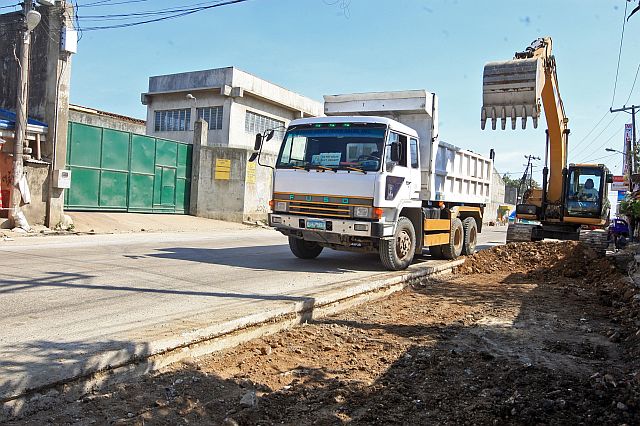
Road rehabilitation like this project near the Plaridel Cansaga Bridge in Mandaue City that was scheduled for completion early this year are needed to avoid wear and tear caused by constant use, the DPWH says. (CDN FILE PHOTO)
GOOD road surface is no guarantee that it can withstand the daily rigors of traffic, the regional Department of Public Works and Highways (DPWH) said yesterday.
“Mao na makita nato nga nindot pa siya, wala pa siya’y guba unya sa ilawom diay kay scaling na diay na siya, kanang nanga-kalkal na sa ilawom (That’s what the public sees on the surface. It looks good, but they don’t see the damage beneath, the scaling and deterioration underneath),” DPWH regional information officer Marie Mignon Nillama said.
She said this in response to complaints about the road improvement projects being done all over Metro Cebu which had caused traffic in recent months.
Nillama said “scaling” involves the deterioration of the road underneath the surface, which can only be determined through equipment especially geared to check road conditions.
Nillama said their agency conducts a yearly test on the roads to determine whether or not their condition could still sustain the 24/7 road use that they are subjected to.
Calling it as “RoCon” (road condition), Nillama said their agency sends out their engineers, along with the equipment used to determine the road condition, all over the national highways.
The data gathered will then be sent to their headquarters in Manila, the only office that has the capability to analyze the information.
Nillama said their regional office receives the information from their Manila headquarters.
She said the DPWH decides which roads need maintenance work.
Even though concrete roads usually have a five-year lifespan, Nillama said the kinds of vehicles that usually pass by it also play a significant role on the road’s condition.
Nillama said they are increasing the thickness of the concrete used in roads under construction, from the usual 10–12 inches to 14 inches, especially those used by trucks, to slow down the wear and tear on these structures.